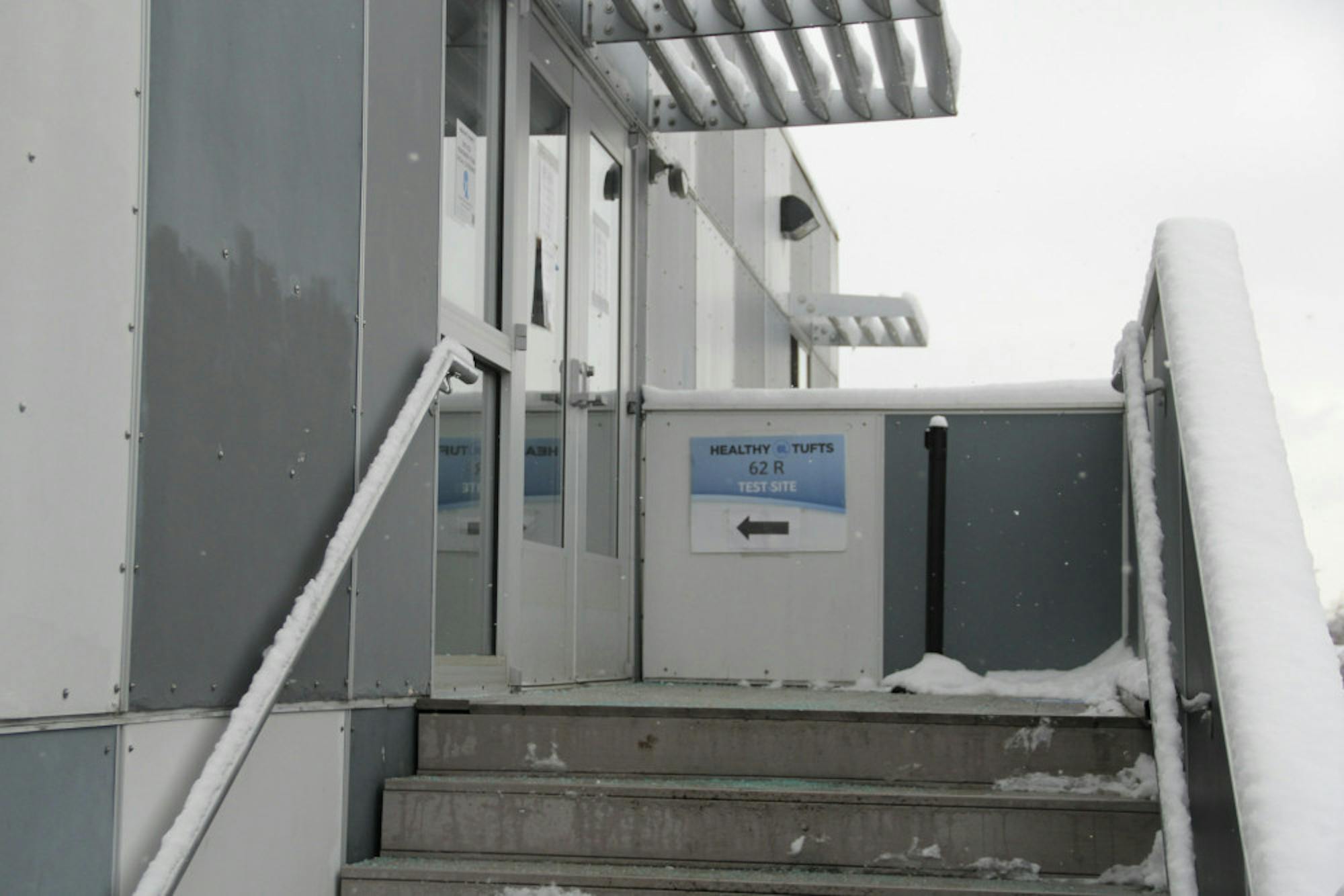The Tufts Daily uncovered an anomaly in university reporting on the Daily's COVID-19 dashboard when the number of new cases on the Medford/Somerville campus declined by 20 and the number of new tests on the Medford/Somerville campus declined by 13 on Feb. 10. New case metrics for the dashboard are determined by subtracting the prior day’s cumulative number of unique positive cases from the current day’s cumulative number of unique positive cases.
Since the cumulative number of unique positive cases should only ever increase, the Daily’s calculated new case metric should only ever be positive.
According to Michael Jordan, university infection control health director, and Chris Sedore, vice president for information technology and chief information officer, the anomaly occurred because the Broad Institute, the organization responsible for performing COVID-19 surveillance testing for Tufts and many other schools in the region, launched a new version of the test it uses to detect COVID-19.
“This new version tests for two distinct genes of the SARS-CoV-2 virus, specifically, the N1 and N2 genes,” Jordan and Sedore wrote in an email to the Daily. “By looking at two regions of the virus, the new assay has increased sensitivity compared to prior versions which only tested for the N2 gene.”
An assay is an analytic procedure in lab sciences that is used to determine the presence or amount of a target substance. The Broad Institute further explained its procedural development in a statement to the Daily.
"Late last month, the Broad testing center upgraded our high-scale testing to double our capacity and increase the robustness of our assay," the statement said. "After two weeks’ worth of data from the upgrade, working with the MA Department of Public Health, we adjusted the interpretation thresholds that we use to call a test ‘positive’."
Jordan and Sedore further explained the reason behind the Broad Institute's change in test classifications. They said that a test must detect the presence of both the N1 and N2 genes to be deemed positive, an increase in criteria compared to the previous threshold, which just required the presence of either gene.
“Based on clinical and epidemiological data from case investigations, the Massachusetts Department of Public Health (MPDH) in collaboration with The Broad Institute determined that the presence of one gene (N1 or N2 but not both) was not consistent with current infection in all cases, and thus results should be reported as [‘inconclusive’]accompanied by a recommendation for re-testing,” Jordan and Sedore said.
Marie Caggiano, medical director of Health Service, said that individuals who tested positive for one gene under the new, more sensitive test were originally advised to begin isolation per typical procedure.
“Tufts University was notified of these positive results and contact[ed] individuals to advise them to begin isolation,” Caggiano wrote in an email to the Daily.
Due to this adjustment in threshold, however, several of these positive test results at Tufts were retroactively determined to be inconclusive.
“This affected a very small number of the 1 million results issued since the updated test was launched across the 200 sites the Broad supports,” Jordan and Sedore said.
Caggiano specified that the tests in question were initially deemed “invalid” before the Broad Institute finally determined that they should be classified as inconclusive.
“Corrected results for individuals who had received a positive result related to testing positive at only one gene targets were issued on 2/8/21,” Caggiano said. “Initially, these re-classified results from the Broad were revised to ‘Invalid’ which was a [temporary designation] pending the update of … their system to include the new designation ‘Inconclusive.’”
Broad's adjustment in testing strategy resulted in the total number of cumulative positive cases dropping, which was reflected on the Tufts COVID-19 Dashboard, from which the Daily gathers data for its dashboard.
According to Caggiano, this modification in testing strategy is the first of its kind since the testing program began at the beginning of the fall semester.
“This is the first change to the assay that has been made since the testing program went live in August and we do not anticipate additional changes on a frequent basis; however, as with all new scientific technology, the possibility to adapt exists as new data and knowledge emerge,” Caggiano said.
The Daily has since been able to report that there were actually four new cases on Feb. 10, calculating this metric from the seven-day total positive cases metric rather than the cumulative positive cases metric.






